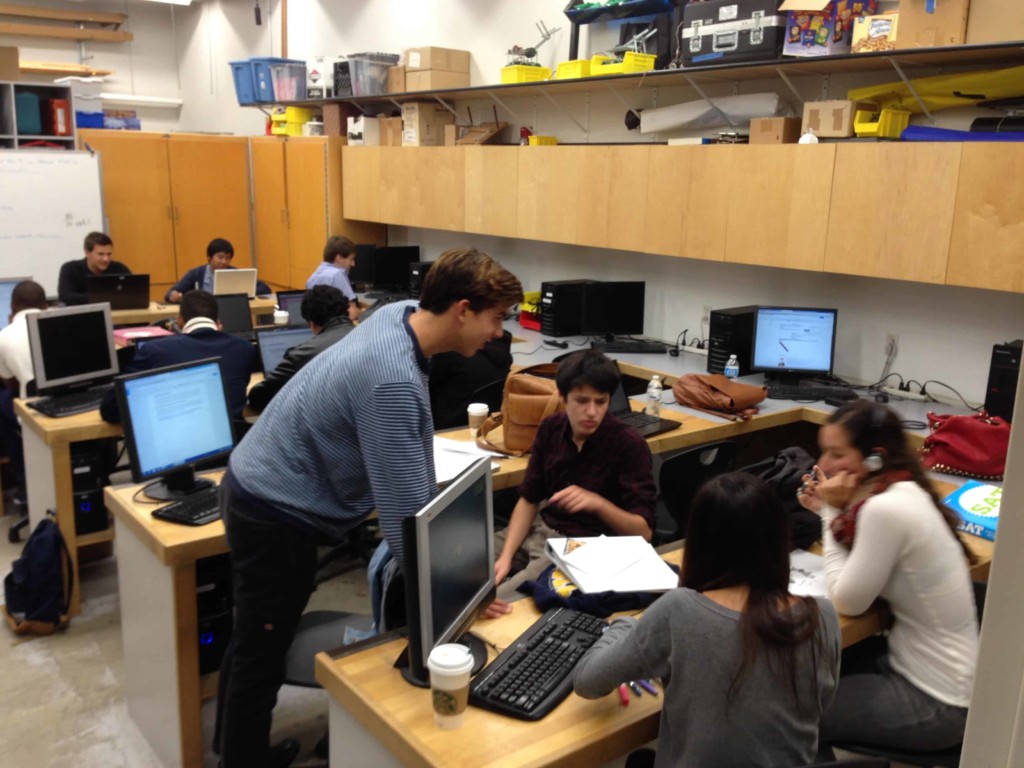It’s Time to Invest in Learning Design

New tools and schools have created the opportunity to reconceptualize learning experiences and sequences. In Getting Smart I predicted that new learning environments and experiences would customize learning, making each hour invested more productive and that improved motivation would boost persistence, leading to more learning time invested–and we’re starting to see evidence of both.
We used to think of this work as instructional design or curriculum development. However, these terms come loaded with a presumption of context–structures, schedules, systems, staffing patterns, courses and credits. A number of factors have made our old notions of learning obsolete including the:
- explosion of digital and modular content including adaptive learning and games;
- rapid growth of online and blended learning;
- deeper appreciation for learning sciences, particularly motivation (e.g., Keller & Suzuki on Attention, Relevance, Confidence and Satisfaction); and
- expansion of applied and project-based learning.
Rather than curriculum, I prefer to think about a series of learning experiences because it doesn’t connote a delivery modality. Rather than instructional design, I prefer the term learner experience (LX) design. Like consideration of user experience (UX) in application development, LX is broad enough to consider many learning, application, and demonstration options.
LX design is the process of “co-create the client’s educational vision,” according to Jason Gorman of leading design shop Six Red Marbles by serving as a translator between stakeholders. “The first deliverables come from early conversation, using design thinking methods,” said Gorman. “We generate a lot of ideas before developing initial prototypes.” A complicated project may involve hundreds of hypotheses and test prototypes.
If LX is such a big opportunity, it must be worth investing in, right? The short answer is yes! But it remains a new practice and it the sector is just beginning to build evidence of a return on LX design. This post considers K-12, HigherEd, and corporate training when it comes to investing in more engaging and more productive learner experience.
K-12. There are are many resources linking elementary and secondary teacher quality to student achievement and a few that cite content quality but few point to how learning experiences are designed. There is a significant amount of literature suggesting instructional strategies–a subset of learning design–influences achievement. Two relevant international studies include:
- Tuncay Saritas and Omur Akdemir, Balikesir University in Turkey, determined in 2009 that instructional strategies and methods, teacher competency in math education, and motivation or concentration were most important in contributing to math achievement.
- Hye-Jung Lee and Ilju Rha, Seoul University in Korea, compared eLearning to traditional classes and determined in 2009 that the structure of content and the nature of interaction influenced student achievement.
On a larger scale, John Hattie’s ranking of various influences on achievement according to their effect sizes suggests that in addition to instructional strategies, factors that boost student agency (i.e., self reported grades, formative feedback, behavior management) are important.
High performing schools share common characteristics including focus, high expectations, leadership, talent development, and an aligned instructional system. These dispositional, structural, and pedagogical factors are the product of an intentional design progress.
Over the last five years, the expansion of Internet access and development of new learning tools has expanded the opportunity for personalized learning in environments that blend multiple modalities. The fact that top performing networks and districts are spending time and resources on developing and adapting new instructional models suggests they predict that their investment will yield high rates of achievement as well as college preparation and completion. (See features blended learning models on Summit, KIPP, Rocketship, High Tech High (pictured) and 96 other schools and networks).
Higher Education. “Our current phase includes adaptive technologies, ubiquitous and extensible design (for mobile and quick-twitch learning), data & analytics, and new approaches that include competency-based education (CBE), blended, and flipped instructional models” said Todd Hitchcock of Pearson.
Instructional designers like Debbie Morrison make the case for thoughtful design. Startups like Acrobatiq appreciate the value of course design and analytics. But in traditional higher education there is little consideration of return on design.
Career education and online learning are two categories of higher education with clear metrics. Programs are often designed around specific outcomes; enrollment, completion, and achievement measures can readily be measured.
Corporate Training. The most mature learning experience work is in corporate (and military) training. Five decades ago Donald Kirkpatrick wrote about evaluating training programs suggesting that the four levels include reaction, learning, behavior and results–and ever since corporate trainers have been attempting to maximize learning and validate the transfer of learning to the workplace and measure actual business impact (Levels 3 and 4).
Twenty five years ago Gloria Gery recommended a performance support solution–an “orchestrated set of technology-enabled services that provide on-demand access to integrated information, guidance, advice, assistance, training, and tools to enable high-level job performance with a minimum of support from other people” In Show Me the ROI!, Conrad Gottfredson suggests that performance support systems make it possible to measure “capability and practices that will link training to business impact and ultimately to financial and strategic benefit.”
Jack and Patti Phillips of the ROI Institute specialize in designing and measuring learning activities but acknowledge that moving from learning activities, to application and impact is challenging. Despite the challenge, corporate trainers continue to attempt to build and measure impact producing experiences. Chris Pappas collected a list of 15 Free eLearning ROI Calculators.
It is becoming increasingly possible to create powerful sequences of experience that boost engagement, promote transferability, and support impact. Powerful learning results from well considered learner experience design–an iterative process well worth investment.
For more, see:
- Designing Powerful Learning Experiences,
- The Learning Design Opportunity of Our Time
- Blended Learning Demands Big Open Spaces
- Classroom Design and the Learning Experience
Also, see 2 Pearson reports on course design in higher education:
- Using Evidence Based Design Learning Design and Evaluation to Improve Outcomes in Online Higher Education
- Course Connect Learning Design & Evaluation
Six Red Marbles and Pearson are Getting Smart Advocacy Partners





0 Comments
Leave a Comment
Your email address will not be published. All fields are required.